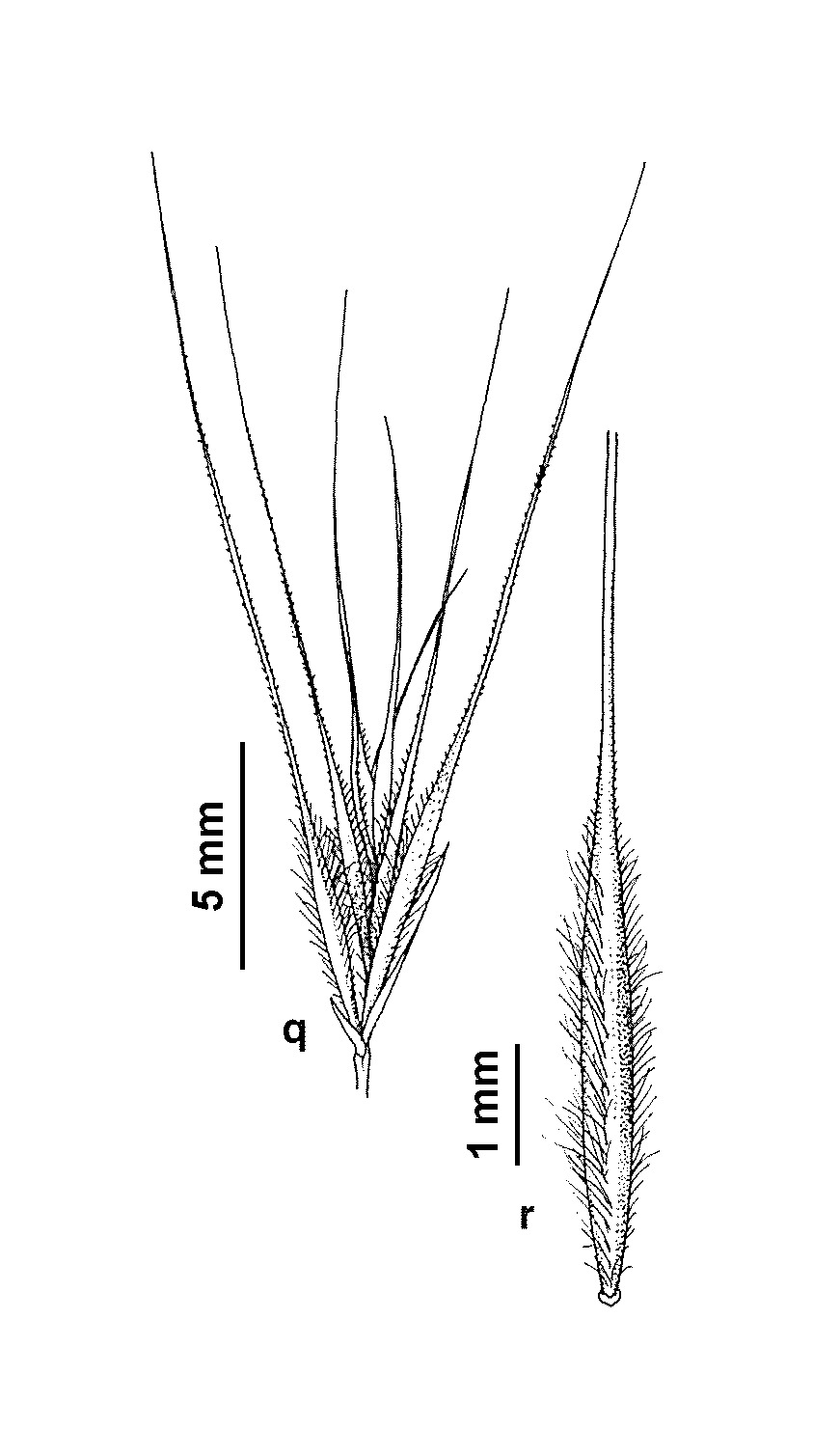Vulpia ciliata
Dumort. Fringed FescueTufted annual, culms slender, erect, to 45 cm high. Leaf-blades flat or inrolled, to 10 cm long and 2 mm wide. Inflorescence a narrow, one-sided spike-like panicle or raceme, erect or slightly drooping, 3–20 cm long, not or barely exserted from uppermost leaf-sheath; pedicels mostly less than 1 mm long, rudimentary in upper part of inflorescence. Spikelets 5–11 mm long (excluding awns), 3–10-flowered, only the lower 1–3 usually fertile; lower glume to 1 mm long, often barely apparent (less than one quarter as long as upper), upper glume 1.5–4 mm, unawned; body of fertile lemma 4–6.5 mm long, ciliate along margins and often also along dorsal nerve, awn usually up to twice as long as lemma body, callus rounded, c. 0.1 mm long. Flowers Oct.–Dec.
LoM, Wim, GleP, VVP, VRiv, GipP, OtP, WaP, Gold, CVU, GGr, DunT, NIS, HNF, OtR. Also naturalised in SA, NSW. Native to the Mediterranean area. Of scattered occurrence in Victoria, found chiefly on sandy or dry, well-drained soils in the north and west of the state (e.g. Wyperfeld National Park, St Arnaud, Mt Arapiles, Castlemaine, Wangaratta districts) with an isolated record from Sorrento on the Mornington Peninsula.
Walsh, N.G. (1994). Poaceae. In: Walsh, N.G.; Entwisle, T.J., Flora of Victoria Vol. 2, Ferns and Allied Plants, Conifers and Monocotyledons, pp. 356–627. Inkata Press, Melbourne.
 Spinning
Spinning


